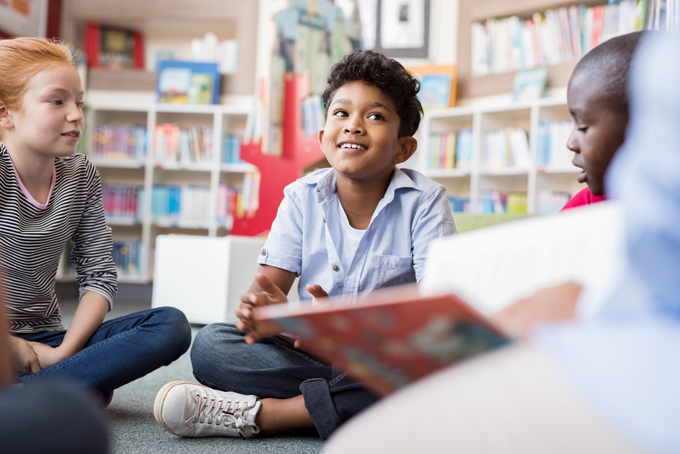
Teacher led read alouds are a powerful instructional activity. Decades of research indicate that the read-aloud experience at all grade levels benefits students’ development as readers and their success in school. That’s great news, but what is a post about good, old fashioned read-alouds doing in a blog post about teaching with technology?
As a professor in a school library media educator preparation program, I have had the opportunity to observe dozens of school library candidates during their student teaching. Many are expanding and enriching the read-aloud experience using digital resources and technologies. Following are examples of how these candidates supercharge their read-alouds with technology.
- Bring the book’s author and illustrator to life by integrating engaging, age-appropriate digital resources such as videos, interviews, blogs, and websites about them into the read aloud experience. For lower elementary students, videos on authors such as Kevin Henkes demonstrate that authors and illustrators have a craft and a message specifically for them. Authors such as Cece Bell may inspire older elementary students. Bell’s talk about why she wrote El Deafo (Abrams) helps students understand her perspective and connect with her as a real person. Older students may enjoy websites of their favorite authors. Neil Gaiman’s site encourages individual exploration by providing content about his work, new releases, essays, FAQ, and even a message board for fans to interact with each other.
- Connect the subject matter of your read-aloud book to issues in the wider world and as well as to content across the curriculum by using maps, videos, websites, music, and virtual tours. If you are reading a story about penguins, show a map and short video of penguins in their habitat. Follow up by modeling inquiry research on penguins, climate change, and its effect on habitats by accessing and searching the school’s educational databases. Play a recording of the recycled orchestra of Paraguay's music after reading Ada's Violin (Simon & Schuster) and collaborate with the music teacher on an interdisciplinary project. Familiarize students with the setting of a book by using Google street view and travel videos. As virtual and augmented reality becomes more common in education, content created with a virtual reality app, such as Tour Creator, is an exciting option.
- Use digital resources to help connect students to the subject matter of a read-aloud book. If you’re reading a book about snakes, for example, you can show students which snakes can be pets or what snakes live in your state. Sharing a book about ducks? Have students sing and dance to "Six Little Ducks," available on streaming sites like Spotify. Take advantage of the ideas for extension activities available on author websites, reading organizations like ReadWriteThink.org and even those posted by individuals, such as this video for kids on how to draw Mo Willem’s Piggie character. Make sure you vet resources for appropriateness, content, and quality. The goal is to find audio, visual, and other digital resources that facilitate student immersion into the time, place, culture, and/or topic of a story to increase comprehension and deepen connections with books.
To help select the resources for your technology-enhanced read-aloud, ask your school librarian for help. They have been trained to provide resources and are willing instructional partners. To organize your enhanced read-alouds, create a slide deck with an introduction to the book and links to the resources. The slide decks can be used year after year and updated quickly. Have fun creating a supercharged reading experience for students at all grade levels.
Mary H. Moen is an assistant professor and coordinator of the School Library Media program at the Graduate School of Library and Information Studies at the University of Rhode Island. Connect with her on Twitter @mary_moen.
This article is part of a series from the International Literacy Association Technology in Literacy Education Special Interest Group (TILE-SIG).